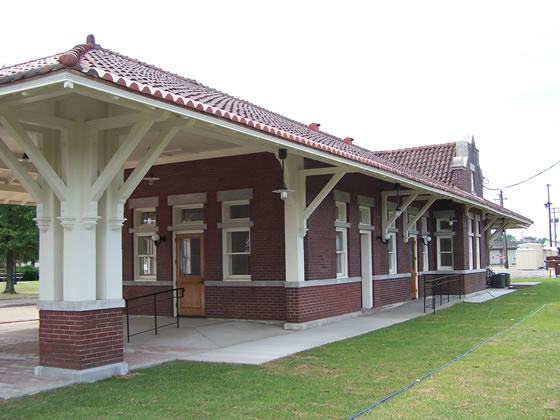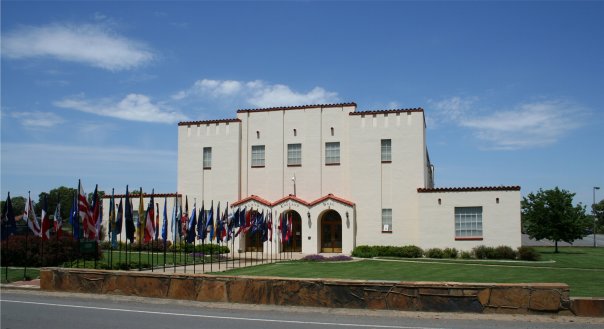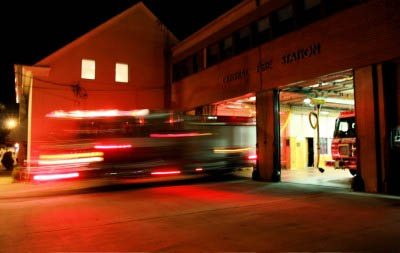Museum Guide News
Museum Guide News
The WWII Japanese American Internment Museum McGehee, Arkansas, serves as an interpretive center for both camps that were in Arkansas during WWII, Rohwer and Jerome. These 2 camps were the 2 furtherest east. There were no camps east of the Mississippi River.Since opening April 16, 2013, there have been close to 17,000 visitors from all50 states and 56 countries. Many former internees from these 2 camps visit every year. Each year close to the anniversary date, a Reunion is held, except for 2020 and 2021 due to Covid.12 miles north of McGehee is the location of the Rohwer camp. There is a cemetery that was not a part of the camp but was adjacent to it. You can look around at the farm land and see how large the camp was.The cemetery has 24 headstones and 4 large monuments. 1 of the monuments is shaped like a tank and is dedicated to the honor and memory of the 100/442. In the distance you can see the smokestack from the hospital boiler room.George Takei, Mr. Sulu from Star Trek, was at Rohwer with his family when he was 5. Because of the way his father answered the loyalty questionnaire, they were sent to Tule Lake in northern California.If you are ever in southern Arkansas, stop by the museum to see the exhibit“Against Their Will”. The Japanese Americans have asked that we keep their story alive, and that is what the museum is there for so this will never happen again.The Japanese Americans have 2 phrases that say it all:Shikata ga nai - It cannot be helpedNidoto nai yoni - Let it Not Happen Again
At the Arkansas National Guard Museum, you will experience the rich history of the Militia and National Guard in the territory and state, including the Civil War years and the 206th Coast Artillery who fought in World War II. The Museum also has displays on the Militia’s role in the Mexican War, as well as the Guard’s involvement in the Spanish American War, World War I, the Korean War, Desert Storm, and the Global War on terror.
In addition, the Museum preserves the history of Camp Robinson. The Post was built in 1917 as Camp Pike to train soldiers for the First World War. By the end of the War in November 1917, Camp Pike had a population over more than 54,000 troops. In 1922, the Post was handed over to the Arkansas National Guard. During the late 1930s, the Post was renamed Camp Joseph T. Robinson after the Arkansas senator passed away.
In 1940, the federal government took over the Post, and trained troops for the Second World War, mostly for infantry and medical replacement. There were possible 100,000 troops at Camp Robinson by 1943. You can also learn at the POW camp on Post that kept around 3,000 captured German soldiers.
The Museum also houses almost 200 weapons known as the Yeater Collection that date from the early 19th century to the WWII years.
The Arkansas National Guard Museum is located in the historic Lloyd England Hall on Camp Robinson, North Little Rock, Arkansas.
Founded in Wisconsin in 1961, the Hall of Flame Museum of Firefighting has resided here in Phoenix since 1974 ,along East Van Buren near the Phoenix Zoo, the ASU baseball stadium (Phoenix Municipal) and the Salt River Project building. Devoted to preserving the history and traditions of the fire service, the museum is home to more than a hundred pieces of larger apparatus.
Exhibits range from a basic English hand pumper built in 1725 to a spectacular hand pumper built in Philadelphia in 1844 that spent its career in Pawtucket, Rhode Island, and a parade carriage built in New York in 1870 that represented the Hotchkiss Fire Department of Derby, Connecticut, but looks more like what Cinderella rode to the ball in. From the era of the motorized fire engine, there’s a 1919 Mack bulldog army truck converted into a fire truck by the fire department of Baltimore, Maryland by the addition of a previously horse-drawn ladder wagon and a chemical cart.
The Hall of Flame is home FDNY’s Rescue 4, which responded to the World Trade Center in Manhattan on September 11, 2001, and whose entire crew was lost in that disaster. Another emotional exhibit is one of the two transport buggies which carried the Granite Mountain Hotshots of Prescott, Arizona to the Yarnell Hill Fire of 2013, resulting in the loss of 19 members of that crew.
The Hall of Flame has a video theater, also home to a fine collection of antique helmets from around the world; a Hall of Heroes memorializing firefighters who have died in the line of duty or been decorated for bravery, and a wildland gallery devoted to smokejumpers, hotshots and firefighting aviation. There’s a hand-on children’s activity area, and, in Gallery 2, possibly the museum’s most well-loved piece: a 1951 American La France from Miami, Arizona that kids (and grown-ups) can climb aboard and play on.
New exhibits have been added since the closure for the COVID-19 pandemic, including a display depicting the evolution of EMS equipment in the Hall of Heroes, a display on the firefighting comic strip Smokey Stover, and an 8-to-1 scale model of a 1933 Ahrens-Fox C-T-4 pumper. At the entryway to Galleries 3 and 4 is a new computer station allowing quick and easy access to information on the Hall of Flame’s 7,000-strong collection of firefighting arm patches.
Along with these improvements, the Hall of Flame has also been attempting to increase its virtual profile, by presenting the collection through the Hall of Flame YouTube Channel, offering both video “tours” of many of the most prominent exhibits, and by continuing its educational mission with many story time videos of classic firefighting children’s stories like No Dragons for Tea, Hercules, Bravest of All, among many others. Some of these stories, notably Curious George and the Firefighters and Pink Fire Trucks, are available in Spanish as well. These videos are available for free on the Hall of Flame Museum’s YouTube Channel, as a homeschooling option in history or science.
www.hallofflame.org



